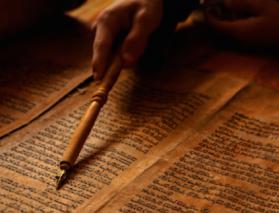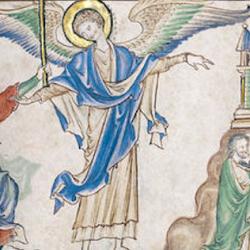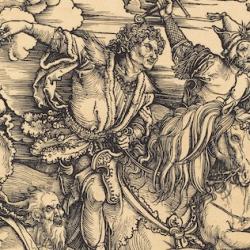Locusts come from the smoke that comes from the pit, and these locusts are granted authority like the authority of scorpions.
Revelation 9:3 includes a chiasm that reinforces this connection:
A. Locusts to the eart
B. And was given to them authority
B’. As have authority
A’. The scorpions of the earth.
Since when do scorpions have authority? And when do they have authority in the “land”? Aren’t they wilderness critters (Deuteronomy 8:15)?
Commentators frequently note the link with 1 Kings 12, where in response to Jeroboam’s request for relief Rehoboam threatens to scourge the people with scorpions, but most haven’t made enough of the connection. Authoritative scorpions in the land can hardly refer to anything else. The king of the abyss (9:11), then, is a Rehoboam figure, who plagues and scourges an already oppressed people.
The exodus resonances of the scene with Jeroboam and Rehoboam enrich our understanding of Revelation 9. Solomon became a Pharaoh-like king, and Jeroboam is a Moses demanding deliverance. Jeroboam leads his people away, but leads them to a golden calf; he turns Aaron. Rehoboam’s threat, in this context, is a threat of expulsion to the wilderness; Solomon the Pharaoh was bad, but Rehoboam is going to unleash the scorpions and make everyone wish they were back in Egypt.
The fifth trumpet brings plagues that are both Egyptian and Rehoboamic, and that would fit a preterist understanding of the book and of the trumpets in particular. These are Egyptian plagues, but they are specifically directed at Israel, which is simultaneously both Egypt and wilderness. Those who have been marked on the forehead are those who are under Pasch, who have already moved out of the kingdom of Egypt, which is the kingdom of Rehoboam.










